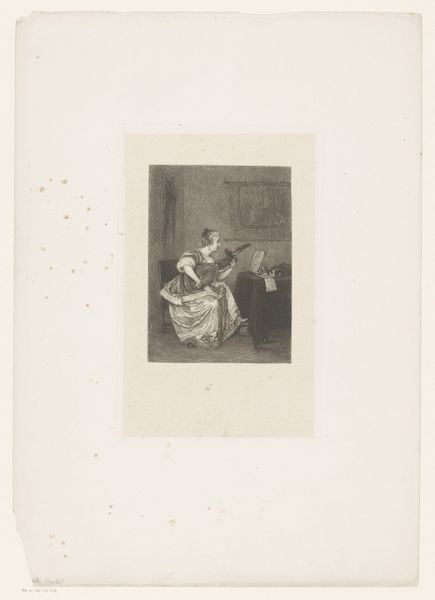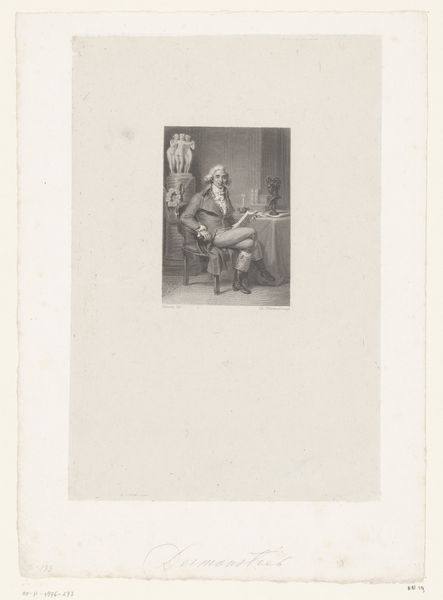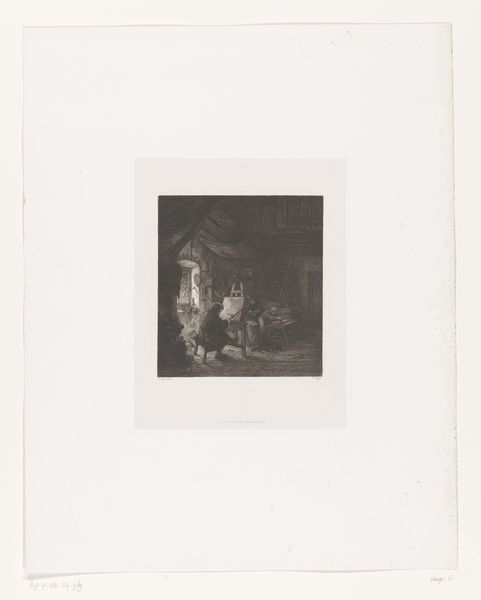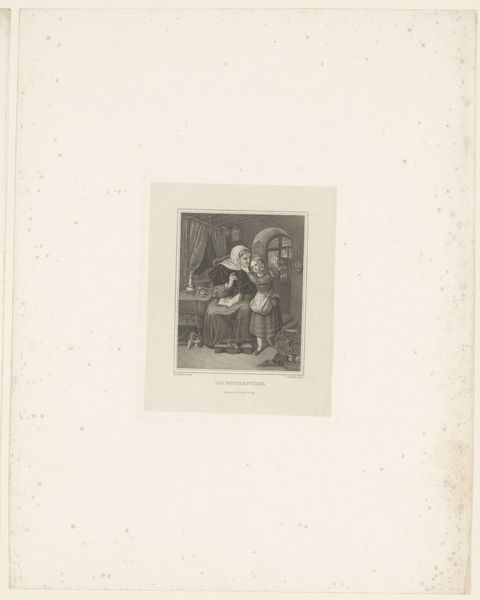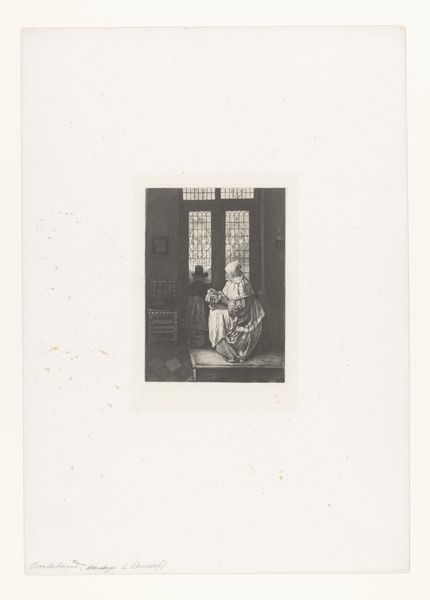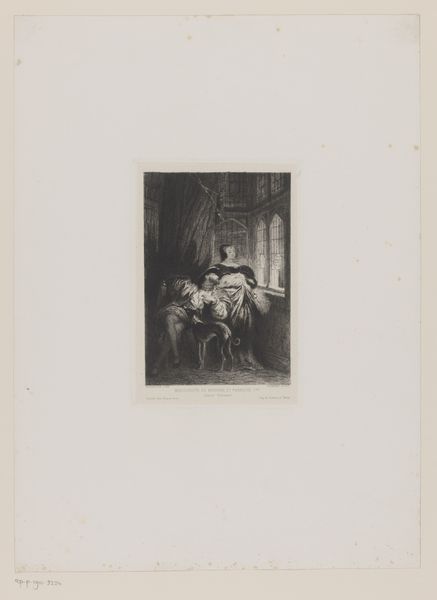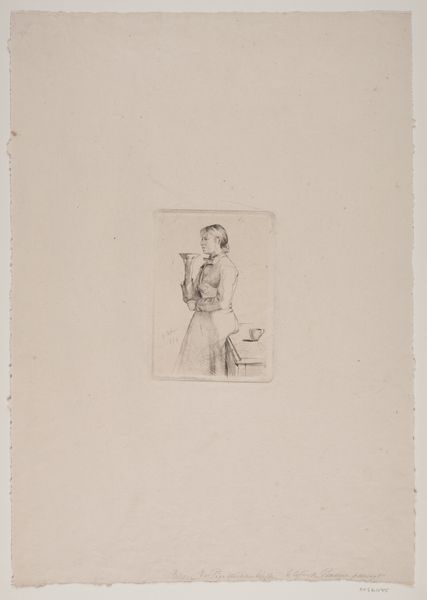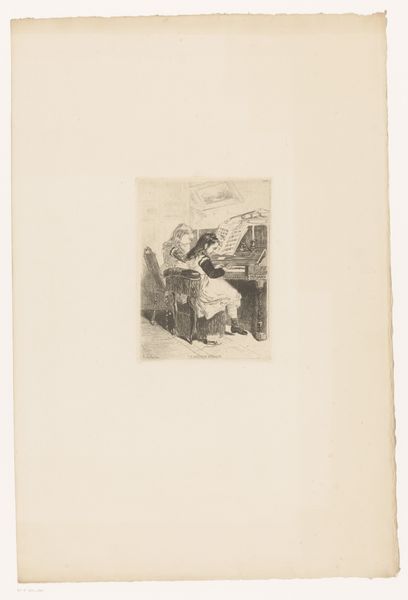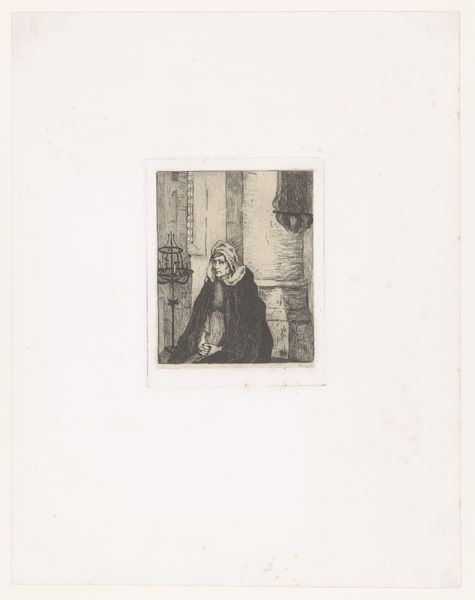
drawing, print, etching, paper, engraving
#
drawing
#
animal
# print
#
etching
#
dog
#
figuration
#
paper
#
line
#
engraving
#
realism
Dimensions: height 99 mm, width 85 mm
Copyright: Rijks Museum: Open Domain
Editor: This is "Head of a Lying Dog with Collar," an 1894 etching by Joseph Schippers, currently held at the Rijksmuseum. I'm immediately struck by the precision of the lines and the subtle texture achieved through etching. It feels very intimate and restrained. What can you tell me about it? Curator: Well, let’s consider the labor involved. Etching, especially with this level of detail, demanded skilled craftsmanship and significant time. How does this intensive process influence our understanding of the relationship between the artist and the artwork, the consumer and the final piece? Notice the collar, its very presence implies ownership and labour. Editor: That's interesting, I hadn't really thought about the actual making of the piece that deeply. The dog looks almost imprisoned by that stark collar. Curator: Exactly! We should be questioning who benefits from artistic practices? Consider how the raw materials -- the copper plate, the paper, the acid -- were sourced, traded, and ultimately transformed into this object. How is the depicted class, a domesticated animal here, mirroring working class status? How might contemporary artistic processes change, reflect, or reproduce social values of labor now? Editor: So you're saying that by examining the materials and processes, we can uncover societal structures and values embedded within the artwork itself. Curator: Precisely. It prompts us to examine labor conditions, class dynamics, and the very economic structures of 19th century art world production. How were images and copies of images like this distributed for mass consumption, reaching audiences far removed from the elite circles of fine art patrons? And whose labor was powering this cycle of reproduction? Editor: I hadn't considered the distribution of prints at that time either. So much more to consider. Thank you. Curator: You’re welcome. It is by deconstructing the tangible that we may unravel deeper meanings of its very means of production and making of art.
Comments
No comments
Be the first to comment and join the conversation on the ultimate creative platform.



